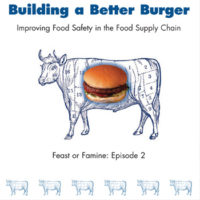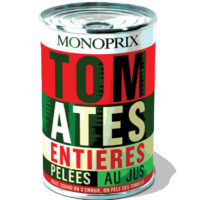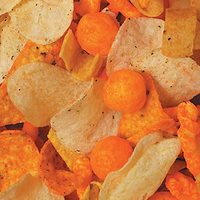Certifying Process Equipment: What’s Involved

Just what is certified processing equipment? Why is it important? What are the benefits? How would I go about getting a certification for a piece of equipment? These and many other questions come up when the topic of certified equipment is presented. These questions are most often raised by equipment fabricators, processing plant buyers of equipment and quality assurance and food safety departments of food processors.
In reality, these individuals and companies have been using certified equipment for many years for items bearing the Underwriters Laboratory certification mark or the certifications from NEMA, the National Electrical Manufacturers Association. What hasn’t been done as often is the certification of processing equipment for conformance to hygienic engineering principles.
The goal of all food processors is to produce a safe and wholesome food product that their customers desire and will repeatedly purchase. Once lost to a food safety recall incident, that customer confidence is extremely hard to regain. The enactment of the Food Safety Modernization Act (FSMA) by the U.S. Food and Drug Administration (FDA) has focused the responsibility for safe food squarely on the shoulders of the processing industry. The purchase and use of processing equipment that has been certified as conforming to hygienic engineering design principles can go a long way toward satisfying the necessary internal processing controls required by FSMA.
The certification of processing equipment is a joint venture between the equipment fabricators and the equipment users. When purchasing equipment, the food processor should specify in the purchase contract that the equipment is to be certified to a specified set of hygienic standards. There are several internationally recognized standards-writing organizations to which equipment can be certified. The 3A Sanitary Standards of 3-A SSI, McLean, VA, and the standards of NSF International, Ann Arbor, MI, are based in the United States, and the European Hygienic Engineering and Design Group (EHEDG) is in Frankfurt, Germany (see “Internationally Recognized Standards for Food Processing Equipment”). All these groups offer a wide range of standards, guidelines and certifying programs to the food, cosmetics, pharmaceutical and bottled water industries. A fabricator can then follow the specific design and fabrication principles necessary to obtain the certification specified by the purchaser. The logos of each of these groups are often placed directly upon the equipment when they meet the organization’s certification criteria.
Why Certify to a Standard?
There are many benefits for both the equipment fabricator and the processor when they participate in the development and use of standards of hygienic design principles. First and foremost is the huge opportunity to work with other knowledgeable individuals to create a standard that will have an impact on your segment of the industry. All the standards-writing organizations operate on a consensus-based development process in which a wide base of experts in engineering, fabrication, processing, sanitation and maintenance debate the principles that eventually become the standards. It is this process that ensures that the principles are truly hygienic and science-based and that the equipment built on these designs is easy to fabricate, maintain and keep clean. This forum is the opportunity for a fabricator to express the benefits of one’s design feature, fabrication technique or material of construction over other options. Participation from a processor allows for discussion of the effectiveness of methods of cleaning a type of equipment to ensure the amount of cleaning time, water usage and chemicals can be reduced to allow for longer processing. Designs that are easy to disassemble enhance both cleaning and maintenance, which can reduce operating costs.
Another benefit is that once a design has been successfully certified, the fabricator can then advertise to a wide potential customer base in multiple industry segments that it can provide equipment known to meet the hygienic requirements of the processor. The ability to show certification of a design provides instant international recognition of hygienic design. There is a serendipitous benefit to hygienic designs in that they are also easy to clean and disassemble for industries that are less concerned with hygiene than with cross-contamination. For example, industries such as ink and paint manufacturing are concerned with the crossover of pigments between batches.
Multiple benefits also accrue for the food processor. Equipment meeting a hygienic standard can ensure the processing equipment can, when properly used, produce a consistently safe food. The hygienic principles of inspectability and cleanability provide equipment that the processor knows can be cleaned, with readily accessible locations where the product contact surfaces can be visually inspected by quality assurance personnel. This ready accessibility also aids in the routine maintenance of the equipment, which can shorten downtime. Hygienic designs reduce the time and cost of cleaning the equipment. Conformance with standards allows a purchasing agent to compare the abilities of different designs and equipment costs without worrying about the safety of the products produced.
One hurdle confronting certified equipment providers is the cost. Potential buyers routinely complain that the cost is too high. Unfortunately, this is one of those instances where the answer to that complaint is both yes and no. Yes, initial costs for certified equipment can be higher. This is because of the design features and the materials of construction. Purchasing agents are confronted with a yearly capital cost budget that may limit what they can purchase. Paradoxically, this spending limit can result in long-term losses for the processor, as operational cost reductions over time shorten the payback time of the purchase price of certified equipment while providing reduced operational costs over the life of the equipment. Certified equipment has consistently shown that the more durable materials of construction and hygienic design features reduce maintenance and cleaning downtime as well as reduce water and cleaning chemical usage. Reduced downtime equates to more product and more profit.
How Do I Certify the Equipment?
So, how to get equipment certified? While it is encouraged to be part of the standard’s development process, it is not required. However, the use of the appropriate standard or guideline is necessary. A prospective fabricator should view the websites of the major organizations such as 3-a.org, nsf.org or ehedg.org, or contact them directly to determine which standards or guidelines they should obtain (these documents can be ordered from the websites). Some are free, while others are available for sale. Once the document is in hand, the engineering, design and fabrication departments should review each criterion as it relates to their equipment. This review may reveal areas of the design that do not conform, thus allowing the fabricator the opportunity to modify a design before submission for certification.
The review should evaluate every detail of the design. The assembly of this information constitutes what is commonly known as the engineering design and technical construction file (EDTCF). Having this information identified and readily available greatly facilitates certification.
One of the first steps in the review process is to have a good understanding of how the standard identifies the product contact and nonproduct contact surfaces. This understanding will greatly assist in how to apply the criteria of the standard. The following definitions from 3-A SSI are typical of the definitions used by all standards-writing organizations for food processing equipment.
“Product Contact Surfaces: All surfaces which are exposed to the product and from which splashed product, liquids or soil may drain, drop, diffuse or be drawn into the product or onto surfaces that come into contact with product contact surfaces of packaging materials.”
“Nonproduct Contact Surfaces: All exposed surfaces from which splashed product, liquids or other soil cannot drain, drop, diffuse or be drawn into or onto the product, product contact surfaces, open packages or the product contact surfaces of package components.”
Within these two definitions is a very important concept. It is the “drain, drop, diffuse or be drawn” concept. This concept expands what is considered a product contact surface, in particular. The evaluator of the equipment must understand this concept as it relates to their equipment. It does not include areas in the processing environment such as ceilings and walls. These areas are the responsibility of the user and the installer of the equipment.
The materials of construction for most hygienic designs are based on stainless steel, generally in the ASTM or AIST types 304/304L and 316/316L or other metals of equal corrosion resistance. Where materials other than metals are required, a wide range of rubber, rubberlike, plastic and ceramic materials may be used. Regulatory agencies like FDA have evaluated and accepted many of these materials for use as food contact surfaces. They are listed in the Code of Federal Regulations in 21 C.F.R. Parts 170–199. All these materials are to be durable and resistant to the conditions that occur during processing, cleaning and sanitation. Be sure to include a listing of all materials and their specification in the EDTCF for future reference.
The balance of the evaluation is a review of all the details of the design. The goal, in its simplest terms, is to eliminate any crack, crevice, trap area and dead end where product can settle during production and not be washed out during cleaning and sanitation. The devil is in these details! Equipment users are interested in production first and foremost. They want to extend production for as long as regulation will allow, and they want to shorten cleaning and sanitation time as much as possible to get back into production. Users want equipment that can be effectively and reliably cleaned with as little disassembly as possible. They want to “clean in place.” This places a significant burden on the designer and fabricator of the equipment when it comes to the elimination of cracks, crevices, trap areas, dead ends and consumable items such as gaskets and seals.
A lot depends on the standard or guideline selected for the certification evaluation. Some of these documents are very general, with statements similar to the following from FDA’s Good Manufacturing Practices: “All plant equipment and utensils shall be so designed and of such material and workmanship as to be adequately cleanable, and shall be well maintained.” This is exactly the goal all food processing equipment designers strive for, but the statement is a little light on how to obtain this goal for certification. Other documents are more prescriptive, providing detail for many of the design features that have proven over time to be hygienic.
How Involved Will This Be?
The level of detail in a prescriptive standard or guideline varies depending on the standards-writing organization, the food industry segment in which the equipment will be placed, the method of cleaning and sanitation to be employed and the user’s needs. These standards and guidelines will generally include but are not limited to the following design areas:
• A clear scope of what the document includes so that the designer knows what the limits are for which they are responsible in the certification process.
• A set of clear definitions of the terminology that is used in the document to ensure all have the same understanding of the terms.
• A listing of the materials permitted to be used. For food processing equipment, the base material is most often stainless steel with specified exceptions for other materials for special applications such as gaskets and bearings.
• A detailed list of the product contact surface fabrication criteria covering such design areas as surface texture, joints (both permanent and removable), radii, draining, gaskets, seals, dead ends, shafts, bearings, cleaning and inspectability.
• A section describing the expectation of design features of the nonproduct contact surfaces so that the equipment can be cleaned within the processing environment of a food processing plant.
The level of detail will depend on the complexity of the type of equipment covered by the document.
All this “homework” preparation should be done before requesting a reviewer to come to your facility to perform the certification evaluation. You will feel much more confident of the hygienic features of your design and will have had the opportunity to fine-tune the design before evaluation.
When the reviewer arrives, remember, this is not an adversarial confrontation. It is the evaluation of your design against the standard. Remember also that you have already evaluated the design. Have your EDTCF readily available. This material does not have to be collected in one big binder, but all of the important information needed should be in a known location and at hand for review. Expect that the reviewer will want to spend a block of time reviewing drawings to evaluate the design and will want to see your materials specifications and purchase orders to verify that the materials indicated were purchased and used. A review of your monitoring and quality control to ensure that the equipment you make today will be the same as that built tomorrow or 6 months in the future is an important part of the certification. So verification records of surface texture, radii, welding, etc. are important to have available for the reviewer. Have a knowledgeable employee at the ready who can assist with the disassembly of the equipment so that the details from the drawings can be verified in the final fabrication.
In summary, the certification of equipment should not be intimidating and can be a source of pride and improved sales. Be sure to do your homework. Select the appropriate standard or guideline. Review your design in detail to remove all of the cracks, crevices and dead-end areas. Check your design according to the method of cleaning for which it is designed. And have your EDTCF readily available.
F. Tracy Schonrock is the principal of Schonrock Consulting. He consults on issues of dairy and food products, specifications and standards, and the sanitary design of food processing equipment. He has spent over 45 years in the dairy industry.
Looking for a reprint of this article?
From high-res PDFs to custom plaques, order your copy today!





